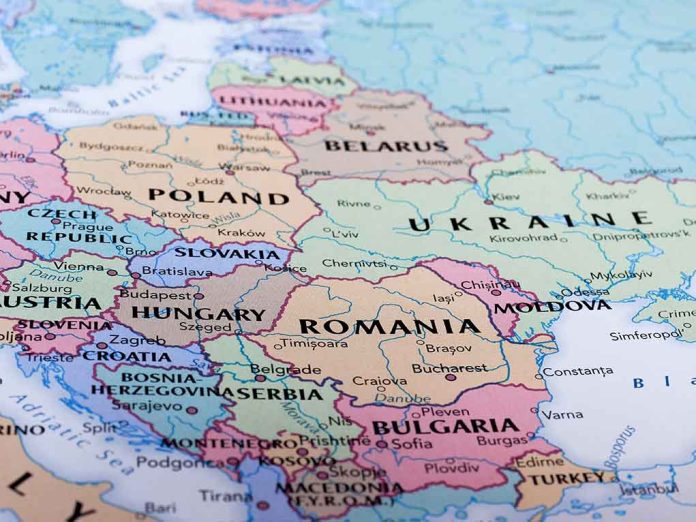
Slovak President Peter Pellegrini suggests Ukraine may need to cede territory for peace, sparking debate on conflict resolution strategies.
At a Glance
- Slovak President Pellegrini proposes territorial compromises for Ukraine-Russia peace
- Slovakia’s support for Ukraine shifts under Prime Minister Robert Fico’s leadership
- U.S. President-elect Trump plans swift conflict resolution, potentially involving Ukrainian concessions
- Ukrainian President Zelensky maintains stance on territorial integrity and NATO membership
Pellegrini’s Realism: A Controversial Path to Peace
Slovak President Peter Pellegrini has ignited a heated debate by suggesting that peace in Ukraine may require territorial concessions. His stance reflects a growing sentiment among some European leaders that a resolution to the conflict might involve difficult compromises. Pellegrini’s comments come as Russian forces continue to make advances in Ukrainian territory, prompting a reassessment of the conflict’s trajectory.
“When it comes to peace, I think we need to remain realistic. Probably no one in Europe among reasonable people today believes that peace can be achieved without some partial territorial losses for Ukraine,” said Slovak President Pellegrini.
This pragmatic approach has raised eyebrows across Europe and beyond, challenging the longstanding support for Ukraine’s territorial integrity. Pellegrini’s position aligns with a broader shift in Slovak foreign policy under Prime Minister Robert Fico, who has taken a more skeptical stance on military aid to Ukraine.
Shifting Support Dynamics in Slovakia
Slovakia’s stance on the Ukraine conflict has undergone a significant transformation. Once a staunch supporter providing substantial military aid, the country has now recalibrated its approach. Prime Minister Fico has been vocal in his opposition to continued military assistance, stating emphatically, “I will support zero military aid to Ukraine.” This shift represents a broader trend of war fatigue and changing priorities among some European nations.
Fico’s government has not only halted military aid but also advocates for lifting sanctions against Russia, marking a dramatic departure from previous policies. This stance has raised concerns among Ukraine’s allies about the potential erosion of support for Kyiv’s defense efforts.
U.S. Involvement and Potential Peace Plans
The discussion around territorial compromises has gained new momentum with U.S. President-elect Donald Trump’s declaration to end the Russia-Ukraine conflict “within 24 hours.” While details remain scarce, reports suggest that Trump’s peace plans might involve Ukraine relinquishing territory and abandoning NATO membership aspirations. This approach aligns with Pellegrini’s views but stands in stark contrast to the current U.S. administration’s policy.
President Joe Biden’s recent authorization for Ukraine to use long-range weapons has drawn criticism from Pellegrini, who cites Slovakia’s proximity to the conflict zone as a concern. This disagreement highlights the complex balance between supporting Ukraine’s defense and managing regional security risks.
Ukraine’s Stance and NATO Ambitions
Ukrainian President Volodymyr Zelensky remains firm in his commitment to Ukraine’s territorial integrity. Zelensky has proposed a ceasefire contingent on NATO accepting Ukraine’s membership request, with diplomatic solutions for occupied territories. However, he insists that any NATO membership must recognize Ukraine’s internationally recognized borders, including Crimea and the eastern regions currently under Russian control.
This stance puts Ukraine at odds with leaders like Pellegrini and German Chancellor Olaf Scholz, who oppose Ukraine joining NATO during wartime. The debate over Ukraine’s NATO membership and its implications for peace negotiations continues to be a contentious issue among Western allies.
Looking Ahead: Challenges and Considerations
As the conflict nears its third year, the international community faces difficult choices. The proposal for territorial compromises, while controversial, reflects a growing recognition of the war’s complexities and the need for pragmatic solutions. However, it also raises questions about the precedent it might set for future conflicts and the principles of territorial integrity in international law.
The coming months will likely see intensified diplomatic efforts to find a resolution, with various stakeholders weighing the costs of continued conflict against the potential compromises required for peace. As these discussions unfold, the world watches closely, aware that the outcome will have far-reaching implications for regional stability and the global order.






















